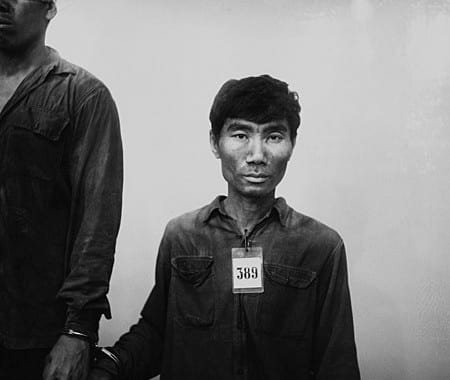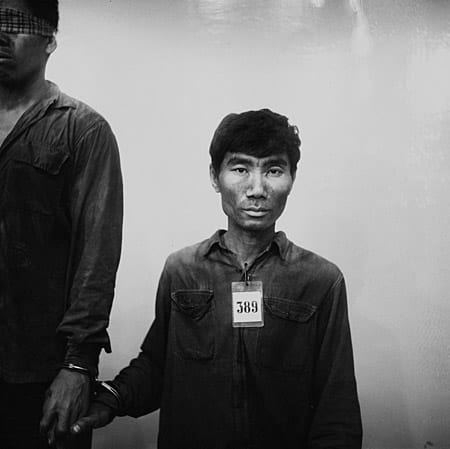
The four-year reign of the Khmer Rouge (1975-9) took more than a million lives-10 percent of the Cambodian population, dead from disease, starvation and murder.
Cambodia Genocide: Memories From Tuol Sleng Prison
By Peter Maguire, Columbia University
Tuol Svay Pray High School sits on a dusty road on the outskirts of Phnom Penh, Cambodia. In 1976, the Khmer Rouge renamed the high school S-21 and turned it into a torture, interrogation and execution center. Of the 14,000 people known to have entered, only seven survived. Not only did the Khmer Rouge carefully transcribe the prisoners’ interrogations; they also carefully photographed the vast majority of the inmates and created an astonishing photographic archive. Each of the almost 6,000 S-21 portraits that have been recovered tells a story shock, resignation, confusion, defiance and horror. Although the most gruesome images to come out of Cambodia were those of the mass graves, the most haunting were the portraits taken by the Khmer Rouge at S-21.
The four-year reign of the Khmer Rouge (1975-9) took more than a million lives-10 percent of the Cambodian population, dead from disease, starvation and murder. There was overwhelming evidence that the Khmer Rouge violated the Nuremberg Principles, the United Nations Charter, the laws of war, and possibly the UN Genocide Convention, yet no individuals have ever been tried in legitimate courts, much less punished. After the fall of the Khmer Rouge, in 1979, the United States and China funneled aid to the deposed regime and undermined all efforts to try the Khmer Rouge leaders Pol Pot, Ieng Sary, Khieu Samphan, Sonn Senn, Noun Chea, Ta Mok and others. Accountability was not part of the UN’s $2 billion reconstruction program for Cambodia, which ran from 1993 to 1994 and ended with disputed elections and no mention of war crimes. Today, Cambodian domestic politics threaten to defeat a proposed UN tribunal to try the surviving Khmer Rouge leaders.
I became interested in the fate of the Khmer Rouge leaders after I defended my Ph.D. dissertation on the laws of war and the Nuremberg Trials in December 1993. I first traveled to Cambodia in early 1994 to interview S-21 survivors and Khmer Rouge prison staff workers. I wondered how Cambodians from both sides of the civil war were reckoning with their respective pasts.
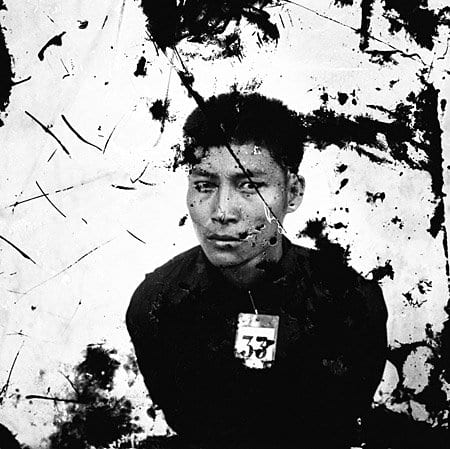
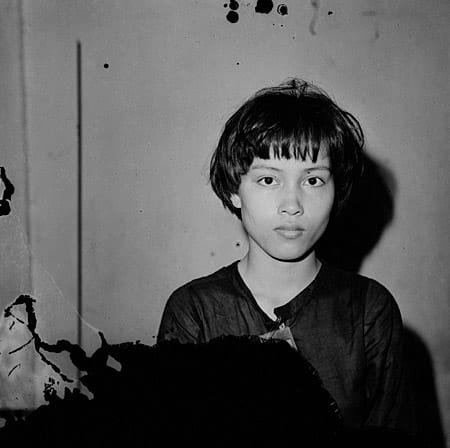
On the far wall are the grisly photographs of bloated, decomposing bodies chained to bed frames with pools of wet blood underneath.
Today, S-21 Prison is known as the Tuol Sleng Museum of Genocide. Inside the gates, it looks like any high school; five buildings face a grass courtyard with pull-up bars, green lawns and lawn-bowling pitches. The ground-floor classrooms in one building have been left to appear as they were in 1977. The spartan interrogation rooms are furnished with only a school desk-and-chair set that faces a steel bed frame with shackles at each end. On the far wall are the grisly photographs of bloated, decomposing bodies chained to bed frames with pools of wet blood underneath. These were the sights that greeted the two Vietnamese photojournalists who first discovered S-21 in January of 1979.
In another building the walls are papered with thousands of S-21 portraits. At first glance, the photograph of a shirtless young man appears typical of the prison photos. Closer inspection reveals that the number tag on his chest has been safety pinned to his pectoral muscle. With a bruised face and a pad-locked chain around his neck, a boy stands with his arms at his sides and looks straight into the camera. A mother with her baby in her arms stares into the camera with a look of indignant resignation. The photographs and confessions were collected in order to prove to the Khmer Rouge leaders that their orders had been carried out.
Many of the questions asked by S-21 interrogators revolved around what the historian David Chandler has described as “Stalinist” charges of sedition–insurrection against lawful authority. Khmer Rouge torture manuals discouraged torture that ended with death, or what they described as “a loss of mastery.” This was discussed at length in a torturer’s manual found at S-21:
Our experience in the past has been that our interrogators for the most part tended to fall on the torture side…. However, we must nevertheless strive to do politics to get them always and absolutely to confess to us. Only once we have pressured them politically, only when we have put them in a corner politically and have gotten them to confess will torture become productive.
The head of S-21 Prison was Kang Kech Ieu, better known as Brother Duch. The former schoolteacher ran a tight ship where both guards and inmates feared for their lives. In a memo from a meeting, Duch told an interrogator, “Remind him about the welfare of his wife and children; does he know that his wife and children have been detained; now that he is here does he know what has become of his wife?” The guards, interrogators and other prison staff at S-21 were between 15 and 19 years of age and were from peasant backgrounds. These self-righteous teens served as the praetorian guards of the Khmer Rouge revolution. One of the most important members of the S-21 staff was a Chinese-trained young photographer named Nhem En, who served as a key link in the prison’s documentation system. He did not defect from the Khmer Rouge until 1997 and I was able to interview him twice in 1998 and twice more in March 2000. A Khmer Rouge hard-liner for more than 26 years, even today Nhem En clings to the belief that without the Khmer Rouge Cambodia would have become a Vietnamese colony: “1979 to 1990, the Khmer Rouge were afraid of Vietnamese colonialism. This is why they fought back.”
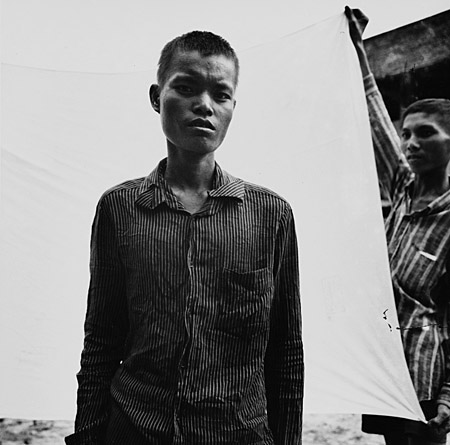
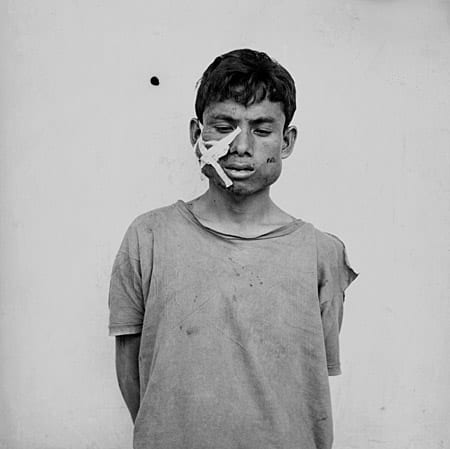
I wondered whether En, after seeing so much cruelty at S-21, sensed that something was very wrong. Or did he believe that S-21 prisoners were truly guilty and deserved punishment?
Today, En lives in northwest Cambodia with his family and hopes to one day become a provincial governor. He was born in 1961, and joined the Khmer Rouge, then known as the National Front, in 1971. He was part of the Artistic Childrens’ Liberation Troupe, which danced and sang for visiting delegations of leaders. At the same time, En served as a rearguard soldier for the National Front. His youth group was taught how to use automatic weapons, and at the age of 12 En was issued his first gun. By 1973, he carried weapons and food to frontline soldiers fighting pitched battles against the army of Lon Nol. The National Front was renamed the Khmer Rouge by King Norodom Sihanouk, and by 1975 they controlled much of the country. Now a battle-proven soldier, En was promoted to unit leader and on April 17, 1975, he and his men heard over the radio that Phnom Penh had fallen. As Nhem En and the other Khmer Rouge soldiers approached the capital, they saw the city’s residents crowding along Route 5. “They looked different from us,” he recalled. “We always wore black uniforms, and they wore many different colors.”
After Nhem En arrived in Phnom Penh, he was sent to study political science and military tactics at a technical school. En was again promoted to an elite youth unit and sent to China for training in late 1976, at the age of 15. After the group arrived in Peking, they were divided, some sent to train in military and naval affairs, others in industry or agriculture. Nhem En was selected to study photography. When he arrived back in Phnom Penh, En was assigned to Unit 870 at the Ministry of National Defense under Pol Pot. At the age of 16 he was sent to photograph the incoming prisoners at S-21 Prison.
Even though En had learned only the basics of photography, he was given a studio and several assistants at S-21. Nhem received his daily orders directly from Khmer Rouge interior minister Son Sen and prison commandant Brother Duch: “Every time I met with them they both told me to be very careful when taking photographs, not to ruin or lose them, and to keep them in order. I was also told to keep the darkroom clean and proper…. They told us that we were clean-minded, and we were the representatives of the Angkar.” Nhem said that he was told by Son Sen that the purpose of the photographs was “for conducting investigations on issues about the CIA spies, KGB, Vietnamese.”
En’s most difficult day came in 1977, when his cousin was arrested and brought to S-21: “We just looked at each other but we were afraid to talk to each other. During those three years that day was the worst, but it was not the only bad day, there were many other days I felt bad. All of my cousin’s family members were also killed. My heart burned until the day I left the town Anlong Veng.” I asked if he was afraid that these photos would later be used as evidence against the Khmer Rouge. Nhem En fell back on a very common justification: “I never had a thought what would happen to the photographs. I made them because I was ordered to. I never thought anything would happen to them.” According to En, the political organization of the Khmer Rouge was very simple. “In the leadership of the Khmer Rouge, there are Ieng Sary, Son Sen, Pol Pot and Noun Chea. They all know everything. If there was no order from the top leaders, no one dared to kill. We could only kill ordinary people by ourselves, but for high-ranking people from the district level or Americans, or diplomats brought back from other countries–if they did not order us to kill them, they would not die. It was them who ordered me to kill those people.”
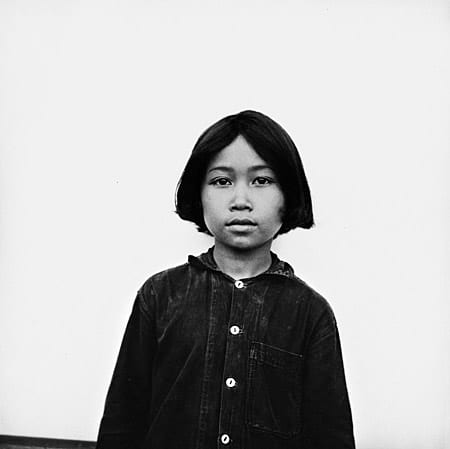
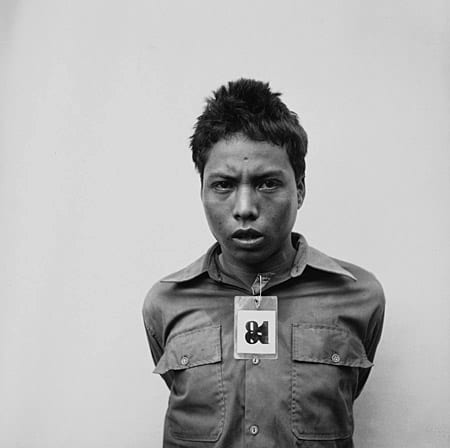
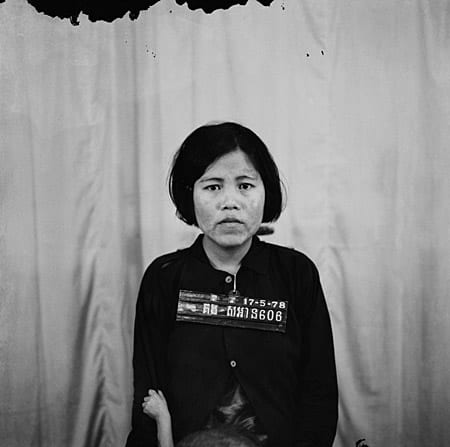
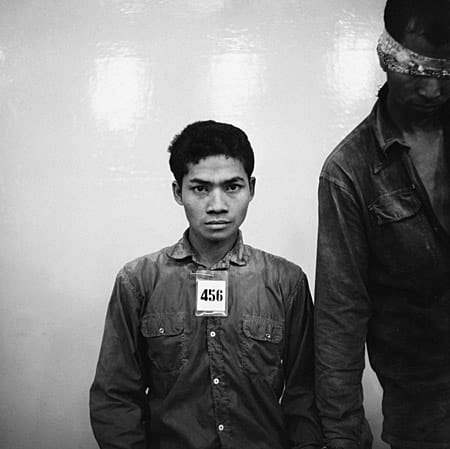
“As they could not endure the torture, they confessed that they were enemies.”
I wondered whether En, after seeing so much cruelty at S-21, sensed that something was very wrong. Or did he believe that S-21 prisoners were truly guilty and deserved punishment? “I saw the suffering of prisoners who were arrested and tortured with electricity. This is beyond what I thought of. If they tied me and whipped me to get me to confess that I was a thief, I would say that I am a thief because I could not bear such torturing.” I pressed En for his opinion of the prisoners’ innocence or guilt, “As far as I know, out of 1,000 people there were two or three of them [who were guilty]. I say this because some from my village, who arrived here with me, were arrested and charged with being the enemy. As they could not endure the torture, they confessed that they were enemies.”
What was the most difficult part of taking pictures of people who would be killed? “It was difficult to take pictures of the newcomers who were blindfolded and tied up when they were leaving the truck. Sometimes they arrived in chains. Sometimes we got reprimanded; for example, if we took a picture of A and the photo was not good and A was already killed, then we were charged as the enemy. In here, if we did not carefully do our jobs we could not escape from being jailed or stopped from working.” I asked, “Was it important to have a stone face–no emotion, no feeling?” En replied, “If the photos of the important people, such as the KGB, were not taken well, then the photographer would be in difficulty. They were looking for CIA, KGB and the invaders.”
Did any of the prisoners ever resist or fight back? Did anybody ever escape from S-21? “Rarely. Fear. People all across the country had no rights or freedom. Some prisoners attempted to run away but could not. In a month, on the 10th, 20th and 30th, the prisoners were allowed to walk around in the room,” En said. I asked him if he considered his actions bad or wrong in retrospect. “As far as I know, it was the mistake of our leaders such as Ieng Sary, Pol Pot and Son Sen who ordered such crimes. Without them, such things did not happen.” When I inquired further about his personal code of morality, I got a rather rote Khmer Rouge reply: “If we did not follow the 12 points of Khmer Rouge morality, we would be in danger. The clean revolutionary people must carry out the 12 points of morality. If anyone breaks it, he is removed to work in a worse position, like raising pigs.”
I tried to get En to reflect more broadly on the work he had done for the Khmer Rouge. “If I look at the years 1977 and 1978, the situation now is quite different,” En said. “It was like being a frog in a well that can only see the sky.” En continued to deflect the blame onto his superiors. “Most of the Khmer Rouge leaders are educated people,” he said. “They learned in France, but could not lead the country at all. Contrary to Hun Sen, who knows nothing but how to lead the country well, the Khmer Rouge leaders who were well educated led the country crazily. Hun Sen is not well educated, but he can lead the country.” If En thought that his former leaders were so bad, did he support the UN’s plan for an international trial for the surviving Khmer Rouge leaders? “As far as I know, the 1978-1995 Khmer Rouge leaders must be tried. The Khmer Rouge leadership has made me suffer. Now the Khmer Rouge leadership does not meet difficulty because they have money. I do not like their leadership. In the end, we were all injured. Look! [He points to the scars from bullet wounds in his thigh.] I got injured in my thigh. If the Khmer Rouge leaders are tried by the UN, I would be pleased to be a witness, because I really know their activities.”
“What would you testify to?”
“The evidence I will get from Tuol Sleng.”
“How do you respond to those who say that the branch of the tree should also be punished?”
“If they are tried by the UN, I think that the people below are like rubbish.”
I asked En how he felt about the fact that his Tuol Sleng photographs had drawn international attention. “I feel both pride and regret, because all of the photographs were sad photographs and were from a painful experience. This is why I didn’t want to change my name,” he said. “My name is still the same. It’s easy for those who want to find me to talk about the case of Pol Pot. Right now, if any government leaders could help me I may want to join promoting democracy. From now on I won’t change my name, even though people suggested I should. I don’t want to change my name because I want to show the world about the tricks of the Khmer Rouge leaders!”
After a year of negotiations with the United Nations, the Cambodian Parliament will decide whether or not the surviving Khmer Rouge leaders Ieng Sary, Khieu Samphan, Ta Mok, Noun Chea and Brother Duch will be tried before a UN-sanctioned, mixed international war-crimes tribunal. The recent acquittal of the Khmer Rouge commander Chhouk Rin by a Cambodian judge, invoking a controversial Khmer Rouge amnesty law and the recent statements of members of the Cambodian Parliament, make it very unlikely that the parliament will approve the UN’s trial plan. The uncertain fate of the UN-approved Khmer Rouge war-crimes tribunal raises a troubling question: Was amnesty for Khmer Rouge war crimes the price for peace in Cambodia?
Peter Maguire, a Columbia University Ph.D. who has taught the law and theory of war at Columbia University and has conducted numerous interviews with the staff and survivors of the notorious Cambodian prison Tuol Sleng, is completing a book on Tuol Sleng for Columbia University Press.
